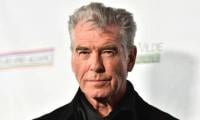Inflation and class war
Joe Biden is relying on the Federal Reserve to choke inflation, rather than instituting any policies to protect workers’ pockets. According to Politico, “Biden declared his ‘laser focus’ on inflation while meeting at the White House with Fed Chair Jerome Powell… and backed the central bank’s aggressive interest rate hikes, which are aimed at cooling the economy by any means necessary, including inducing a possible recession.”
The medicine the Fed has on offer is the same toxic elixir it’s had on its shelf for decades – hiking interest rates to “cool” the economy. This approach is a case of medicine that is worse than the disease. Cooling off the economy is a euphemism for scaling back investment in the economy, thereby driving up unemployment and decreasing workers’ bargaining power. Interest rate hikes have the power to ‘cool’ the economy, because they make it more costly to borrow money, and therefore discourage investment in production. This, in turn, leads to reduced productive capacity, fewer available jobs, and an increase in unemployment.
Most mainstream economists assume that even if external factors – such as pandemic-induced supply chain chokeholds – trigger price hikes in the economy, any sustained inflation is caused by too low unemployment. A tight labor market means that workers cannot be easily replaced, and therefore they enjoy greater bargaining power, which eventually leads to higher wages. These elevated wages in turn give working people more money to spend, driving up demand for goods. And businesses look to hike prices in order to pass on the rising cost of wages to consumers.
The fact that wages have not, in fact, kept up with inflation should be cause for skepticism. Nevertheless the Wall Street Journal confidently explains:
“[D]ynamics [of a tight labor market] are driving wage growth, adding to inflationary pressures. Strong gains in wages and hiring are pumping more money into Americans’ bank accounts, propping up demand as inflation erodes spending power for many. Meanwhile, higher labor costs stemming from worker shortages are prompting many employers to raise prices.”
Since March, the Fed has raised interest rates (via its benchmark federal-funds rate) three times, including 0.75 per cent last month – the highest interest rate hike in 28 years. It’s indicated a total of seven increases this year are likely. We don’t know how far the Fed will go, or how severe a recession it will induce. But rumblings of a coming recession are growing. Over the last few weeks, Powell has repeatedly stressed that the Fed will continue to raise rates until inflation is under control, even if that means causing a recession.
Speaking at the European Central Bank’s annual conference, Powell said, “Is there a risk we would go too far? Certainly there’s a risk. The bigger mistake to make – let’s put it that way – would be to fail to restore price stability.”
“The process is highly likely to involve some pain,” Powell later added, “but the worse pain would be in failing to address this high inflation and allowing it to become persistent.”
So far, job growth over the last couple of months has remained steady. But the aim of the Fed’s actions remains to slow economic growth, just at a time when savings accumulated during the pandemic have been drawn down, and credit card balances are approaching record highs. The simultaneous effect of interest rate hikes and likely job losses on the one hand, while prices and the cost of living are still rising on the other hand, will exact a heavy burden on working people. Indeed, economists promise us a difficult “transition” at best, as inflation typically takes a long time to come down after a slowdown.
Biden’s support notwithstanding, the Federal Reserve is free to act without direction from the White House or Congress. This independence is often lauded as a means to guard against political pressures, thereby granting the Fed objective stewardship of the economy. In reality, ‘independence’ is a positive spin on the country’s arguably least accountable, least democratic institution. While every detail and line item of congressional stimulus bills has been debated and deliberated over – even if the outcome remains undemocratic – the Federal Reserve takes hugely consequential decisions without even the pretense of public discussion or oversight.
Nor is ‘objective’ economic stewardship a plausible reality. Economics and politics have never been separate entities, and the question of inflation is no exception. As I’ve written elsewhere, inflation is always a question of class politics — which class gains at whose expense. Who pays for inflationary prices is ultimately a question of who gets what share of the national income. A rise in wage share will squeeze the profit share of income, and vice-versa.
Economic pundits conspicuously avoid the possibility of addressing inflation by constricting profits rather than wages. What if instead of raising prices, businesses were forced to make do with smaller profit margins? Or if instead of raising interest rates to constrict the economy’s growth, targeted price controls and socialization of public needs were used to lower the cost of living? After all, US corporations are not only charging more, they’re also making higher profits. S&P 500 companies (the country’s largest companies) are raising their prices by about 20 per cent more than the rate of inflation for wholesale prices. Their profit margins (12.1 per cent in 2022) are at record highs. Many oil companies’ profits per gallon of gas are at their highest point in history.
The Federal Reserve is not necessarily opposed to wages rising, but only in so far as these raises are contained within certain parameters that do not risk creating inflationary pressures. Thus, as Tim Barker, a historian of political economy, has argued, hawkish Federal Reserve policies since the 1970s have “played a direct role in the decline of the labor share since the 1970s.” (‘Labor share’ refers to the share of the national income that goes to wages and salaries, rather than profits.) And while a more dovish turn since 2016 – allowing the economy to expand despite low unemployment rates – did lay the basis for more pro-labor conditions, this experiment was only allowed to run as far as it did not endanger inflation.
Low interest rates for over a decade created the conditions for low unemployment rates by feeding the economy with cheap credit. But it also, in Barker’s words, “opened new horizons for a would-be activist government” by lowering the cost of government debt, and therefore deficit-driven social spending. Yet as Barker presciently argued a year ago, this flexibility in the Fed’s actions was not a concession to workers gaining a greater share of the national income. It was only predicated on an assumption that the labor movement was too weak to make substantial wage gains, even in the context of low unemployment rates. “The current experiment,” Barker explained, “was made possible by a recognition that workers had suffered a secular defeat – specifically, that they had lost the ability to increase or even defend their share of the national income. What would happen if labor became stronger?”
The Federal Reserve’s conventional playbook has, since the 1970s, been informed by “monetarist” ideas first championed by economist Milton Friedman. Friedman stated that a “natural rate of unemployment” exists below which inflation begins to take off. There may be debates and turns at the Federal Reserve that have taken place since the 1970s, but they have only challenged how low the rate of unemployment can be allowed to go without risking inflation, not whether profits could ever be sacrificed to a larger labor share of the economic pie.
Excerpted: ‘The Federal Reserve Thinks the Answer to Inflation Is Imposing Class War’.
Courtesy: Commondreams.org
-
 Matthew McConaughey Says THIS Got Him Involved In WWE-style Wrestling Fight In Small African Village
Matthew McConaughey Says THIS Got Him Involved In WWE-style Wrestling Fight In Small African Village -
 Pierce Brosnan Gets Honest About Impact Of Growing Older On Career
Pierce Brosnan Gets Honest About Impact Of Growing Older On Career -
 WhatsApp May Soon Let Users Set Profile Cover Photos
WhatsApp May Soon Let Users Set Profile Cover Photos -
 Michael B. Jordan Makes Emotional Remarks About 'Sinners'
Michael B. Jordan Makes Emotional Remarks About 'Sinners' -
 US 'Doomsday Plane' Lands At LAX For The First Time In Its 51-year History
US 'Doomsday Plane' Lands At LAX For The First Time In Its 51-year History -
 Royal Fans React As Kate Middleton Receives Rare Honor On 44th Birthday
Royal Fans React As Kate Middleton Receives Rare Honor On 44th Birthday -
 Amy Madigan Opens Up About 'Weapons' Prequel: 'That's A Problem'
Amy Madigan Opens Up About 'Weapons' Prequel: 'That's A Problem' -
 Tom Blyth Based 'People We Meet On Vacation' Role On THIS '80s Romcom Lead
Tom Blyth Based 'People We Meet On Vacation' Role On THIS '80s Romcom Lead -
 England Midfielder Stanway To Leave Bayern Munich This Summer
England Midfielder Stanway To Leave Bayern Munich This Summer -
 Princess Diana's Brother Sends Out Invitations Days After Royal Family Snubbed Prince Harry
Princess Diana's Brother Sends Out Invitations Days After Royal Family Snubbed Prince Harry -
 Kanye West Makes Legal Move Against Rival Lawyers
Kanye West Makes Legal Move Against Rival Lawyers -
 Android May Soon Let Users Test Paid Games Before Buying
Android May Soon Let Users Test Paid Games Before Buying -
 2026 Global Health Outlook: Experts Warn Of Key Challenges Ahead
2026 Global Health Outlook: Experts Warn Of Key Challenges Ahead -
 Grok App Hits No.1 In The UK App Store Amid Government Threat Of Platform Ban
Grok App Hits No.1 In The UK App Store Amid Government Threat Of Platform Ban -
 Andrew Receives New Orders From King Charles As Former Duke Likely To Follow Prince Harry's Footsteps
Andrew Receives New Orders From King Charles As Former Duke Likely To Follow Prince Harry's Footsteps -
 'Hunger Games' Update: Jennifer Lawrence Returns To The Franchise
'Hunger Games' Update: Jennifer Lawrence Returns To The Franchise



